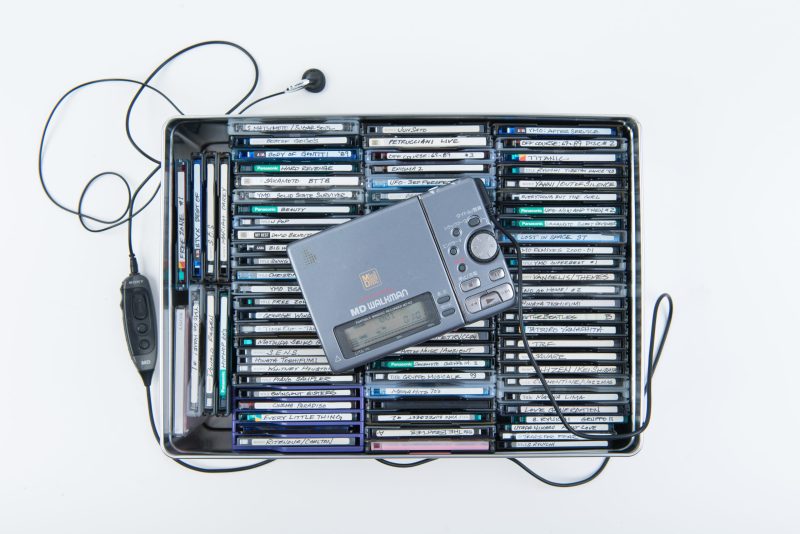The last MD I bought new. Technically a birthday present. Its satin blue and silver chassis caught my eye in Best Buy.
At the time, I was looking for a device to meet 2 primary needs. Robust portable playback (especially while skating) and a recorder I could use to capture the CMFAMALAM radio show on 89.9 FM, Friday mornings at 1 AM EST (shoutout Stretch, Bob & Sear!). I had previously used a pair of 90min cassettes, producing an incomplete, segmented recording which would inevitably flip sides in the middle of broadcasting a good song or amusing banter. LP4/EP mode solved that. I was into a lot of lofi styles at the time so lossy file compression was an afterthought. A bigger game changer was the workflow.
My first portable music device with drag & drop capability via USB connectivity… came with an exciting, yet frustrating learning curve. The included app was clunky and slow on both Windows ME and XP, however it somehow still streamlined mass file tagging. This revolutionized my mixtape, playlist, compilation game for the 21st century.
The RM-MC37LT remote provides all the controls one might need, in a logical layout which can be navigated sight-unseen with relative ease. The lack of a backlit display doesn’t get in the way of where you want to go in playback mode. The NF610 itself also omits backlighting, presumably to maximize battery life from a single AA cell, which it does exceedingly well. I clearly recall using an Energizer Lithium battery for the first time and marveling at a full month of regular use (LP2 mode) with sensitive Shure in-ears. This nod toward power conservation does not handicap the output by any means.
In “normal” sound mode, at about 70% volume level, Sony MDR 7506 are capably driven and hit the upper threshold of “comfortable listening”. Remarkable bass response, especially with discs recorded in SP mode. Even LP2 recording mode, the darling of fitting 2 CDs on a single MD, provides a satisfying listening experience for more bass-oriented styles of music. LP4 mode unlocks 320 min of storage for 80min MD, which does roll off more audio content at both lower and upper extremes, however the ability to continuously record a 4 hour radio show and later split into smaller tracks made [this] lossy mode invaluable in its day. Sound modes 1 and 2 may help “compensate” for some of the roll-off. User definable presets from -4 to +3 can be set for both bass and treble response, in the menu. Season to taste.
The tuner strength is dependent on using wired headphones with the remote, and does a good job depending on location. YMMV. In addition to the omnipresent AM/FM options, you could also listen to broadcast TV stations, as well as dedicated weather bands for timely forecast updates. These options were far less common, and surprisingly useful in the pre-smartphone era before “there’s an app for that.”
In re-examining this player/recorder I dug out 2 favorite discs. The first, a “double feature” LP2 mode MD with Cannibal Ox – The Cold Vein / Qwel – The Rubber Duckie Experiment. The second, a “best of MTV Amp” type compilation I made in SP mode and titled ELEC. They brought me right back to the days when I made them. Bliss.
Pros: sound, longevity, functionality, AA battery convenience, usb, lcds are visible outside
Cons: no backlit screens, AA battery bay and remote cable design may limit options for comfortable pocket position
Molded plastic outer chassis with metal hinge/skeleton.
AVJonez
